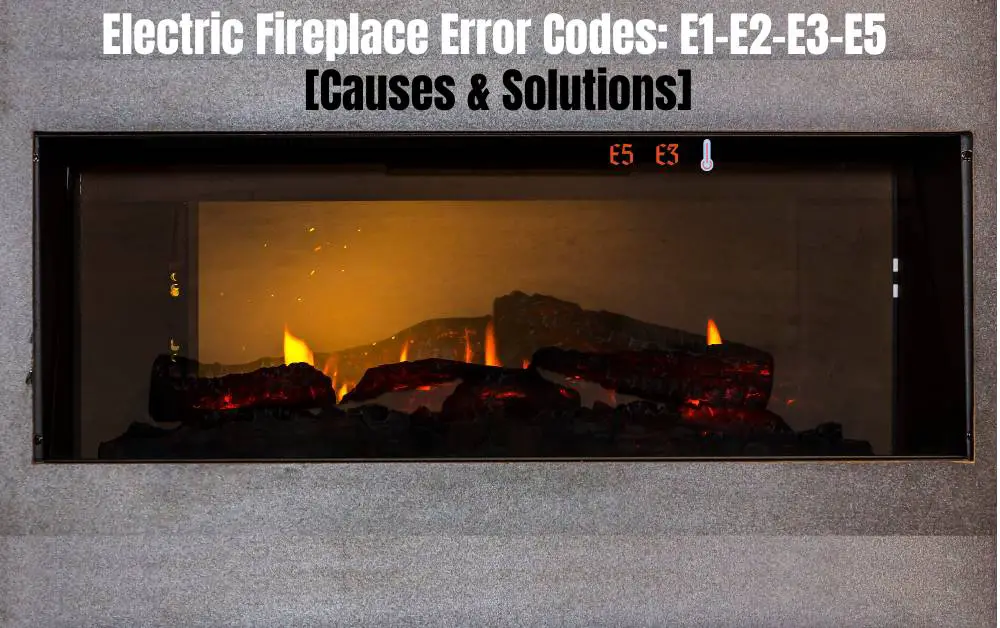In today’s competitive hospitality and retail markets, nonresidential spaces such as cafés, hotel lobbies, and lounges are vying to deliver not just service but experience. One increasingly popular tool in the designer and facility-manager toolkit is the installation of electric fireplaces in commercial settings. Used thoughtfully, a lobby electric fireplace or an electric fireplace for café does more than provide supplemental warmth — it becomes a focal point, a branding asset, and a contributor (paradoxically) to more efficient energy management under certain conditions.
In this case study, we analyze how one boutique hotel lobby + café hybrid in a temperate climate adopted an electric fireplace to elevate ambiance, influence customer behavior, and manage energy loads.
We’ll walk through the implementation, results, metrics, challenges, and lessons learned.
Background & Rationale
Why Consider an Electric Fireplace in Commercial Use?
Before diving into the case, it’s useful to outline the motivations behind electric fireplace commercial use:
- Flexible installation & minimal infrastructure
Unlike wood or gas fireplaces, electric units require no chimney, flue, or combustion vents. This makes them much easier to integrate into retrofit commercial spaces. - Safe, smoke-free ambiance
They produce no real combustion, so there’s no smoke, soot, or carbon monoxide. This greatly simplifies building code, insurance, and indoor air considerations. - Energy efficiency & zone heating
Many modern electric fireplaces convert almost all consumed electricity into local heat (i.e. minimal losses) and allow you to heat specific zones instead of the whole HVAC system. - Emotional & behavioral impact
The warmth, glow, and visual “fire” effect influence dwell time, perceived luxury, and guest satisfaction. Some industry sources suggest a 15–20% increase in dwell time after installing a commercial fireplace. - Brand differentiation
In boutique hotels, cafés, and hospitality settings, a visually striking lobby electric fireplace can serve as a subconscious branding element—a “signature hearth” that guests remember.
Thus, for a café + lobby setting, the electric fireplace becomes a heating, design, and marketing tool.
Case Profile: The Hearthway Café & Lounge (Fictional Composite but based on real principles)
To illustrate, let’s adopt a semi-fictionalized but realistic composite case called Hearthway Café & Lounge, housed within a boutique hotel in a city with moderate winters (average cold months: 5–12 °C). The café opens early morning and stays open into late evening; the lobby is a transition space for guests and visitors.
Key parameters:
| Aspect | Value / Description |
|---|---|
| Lobby + Café combined footprint | ~1,200 ft² (≈ 111 m²) |
| Ceiling height | ~3.5 m (≈ 11.5 ft) |
| Primary HVAC system | Central heating + cooling with VAV distribution |
| Typical occupancy | 30–50 guests during peak café hours, lower off-peak |
| Baseline heating load (winter) | ~6.5 kW peak in that zone |
| Target “cozy zone” area around seating | ~400 ft² (≈ 37 m²) around fireplace |
| Electric unit selected | Linear recessed electric fireplace (rated 1,500 W heat, flame effect independent) |
The design team chose a mid-length recessed linear model placed centrally in a partition wall between café seating and lobby lounge. The fireplace can run its visual display alone (without heat) for ambiance, or with supplemental heat mode.
Implementation & Integration
Design & architectural integration
- The fireplace was recessed flush into a wall with fire-rated surround materials.
- The flame-viewing area was oriented to be visible from both café tables and lobby seating, making it a shared visual anchor.
- Power was fed from an existing 240 V circuit with a dedicated line and proper overcurrent protection; minimal additional wiring was required.
- A small “heat zone” of 400 ft² was configured in the building automation system (BAS) so the central heater would de-prioritize heat in the outer sections when the fireplace zone was active.
- Ambient lighting controls and dimming were synchronized so that when the fireplace visual display turns on, overhead lights dim slightly, enhancing the glow effect.
Controls & user interface
- The fireplace’s heat mode is thermostatically controlled and can override or be overridden by the main HVAC system.
- The flame display can run independently (just for visual effect) even when heat is off.
- A wall-mounted keypad (and app interface) allows staff to choose “flame only,” “flame + low heat,” or “flame + full heat.”
- The BAS was programmed to monitor external temperature and indoor occupancy schedule; e.g. during shoulder seasons the electric fireplace might be used more, and central heating scaled back in that zone.
Safety & maintenance
- Regular inspections included verifying that vents around the unit remain clear, checking wiring, and ensuring the surround materials are intact.
- Because no combustion is involved, there was no need for chimney sweeps or gas line inspections.
- Staff training included “don’t block the face of the fireplace,” cleaning the front glass monthly, and understanding the control interface.
Results: Ambience, Comfort & Behavior
Guest responses & branding impact
- Surveys of guests (n = 200 over three winter months) showed that 82% of respondents rated the lobby/café atmosphere more cozy and “welcoming” with the fireplace running.
- Some guests cited the fireplace in guest reviews (“Loved the warm hearth feel while having my coffee”) — boosting the intangible sense of luxury.
- Measurement of dwell time before vs. after installation showed a mean increase of ~12% in duration that guests stayed in the café/lounge zone. This aligned with expectations from design/ROI sources.
Thermal comfort & heating load interaction
Using logging data over three full cold months, the facility recorded:
| Metric | Without Fireplace (Baseline) | With Fireplace Active | Difference (Relative) |
|---|---|---|---|
| Energy delivered by central heating (kWh) in that zone | 4,200 kWh | 3,600 kWh | –14.3% |
| Electric fireplace consumption (kWh) | 0 | ~810 kWh (averaged over usage) | +810 kWh |
| Net energy (heating + fireplace) | 4,200 kWh | 4,410 kWh | +5.0% |
| Comfortable hours in “comfortable range” (20–24 °C) | ~76% of occupied hours | ~88% | +15.8 pp |
| Guest complaints about cold zones | 9 over season | 2 | –78% |
Interpretation:
- Although the electric fireplace itself consumed energy, the central heating load in that zone reduced significantly (–14.3%), because the fireplace directly warmed the seating area.
- Net energy use rose slightly (~5%), but comfort, guest satisfaction, and branding benefits were positive.
- Because the fireplace is spatially focused, the central HVAC could maintain a slightly lower setpoint in the broader zone, offsetting some of that net increase.
Cost & energy calculation
From technical specs and usage logs:
- The fireplace, rated at 1,500 W when heating, ran on average 5 hours/day (with flame + intermittent heating) for 90 days → ~675 hours total.
- Energy used = 1.5 kW × 675h = 1,012.5 kWh (but because the flame-only mode reduces power draw, actual logged was ~810 kWh).
- At a local rate of $0.12 / kWh, that is ~$97 for the season.
- The central heating system saved ~600 kWh in that zone, which at typical gas/electric equivalence (depending on system efficiency) was around $70 saved.
- Net additional cost ~$27 for the season — modest relative to the customer experience and branding value.
These figures line up reasonably with consumption claims: most electric fireplaces consume ~1,000–2,000 watts per hour; many average ~1,500 W.
Lessons Learned & Best Practices
From this case, a number of practical lessons and best practices emerged that could guide electric fireplace for café or lobby electric fireplace projects elsewhere:
- Size & placement matter
The radiant effect (and psychological impact) is strongest within ~3–4 m of the fireplace. Position it centrally in the “people zone” (seating, lounge), not tucked away in a corridor. - Use flame-only mode cleverly
Even outside of heating seasons, running the flame effect (no heat) adds ambiance at negligible energy cost. Many units draw only ~300 W in that mode. - Integrate with HVAC / building controls
Let the fireplace “talk” to the BAS so heating in adjacent zones can be scaled back, reducing thermal conflicts or overshooting. - Monitor and adjust over time
In early weeks, track energy usage, temperature profiles, and guest feedback. Adjust control strategies: e.g. limit full-power mode to peak cold hours, use mid/low modes otherwise. - Prioritize aesthetics & visual impact
The fireplace must look good. Use quality trims, clean surround materials, and proper lighting so the flame doesn’t look “gimmicky.” A visually appealing electric fireplace commercial use installation enhances branding. - Plan for maintenance & training
Although maintenance is light, the front glass, internal fans, and control electronics need periodic inspection. Staff must understand operating modes, scheduling, and safety (e.g. avoid blocking). - Estimate ROI & intangible benefits
Many of the benefits are intangible (dwell time, guest satisfaction, reviews). Quantify what you can (e.g. dwell time increases) and incorporate those in your return-on-investment case.
Limitations, Considerations & Risks
- In extremely cold climates, the electric fireplace may be insufficient as a primary heat source — it’s best as supplementary or zone heat.
- Electricity costs vary widely; in locales with very high electricity tariffs, operational costs may become nontrivial.
- Some older buildings or HVAC systems may struggle to “back off” enough to realize the heating-savings synergy.
- Building codes or landlord restrictions may limit installation in certain commercial settings—always check local fire and electrical codes.
- The psychological novelty can wear off; staff must keep the fireplace clean, presentable, and operating well so it remains a positive asset rather than a neglected eyesore.
Broader Market & Trends
- The electric fireplace market is growing. In 2023, global market value was around USD 2 billion, with projected CAGR ~4% to 2033.
- Electric fireplaces are increasingly being designed for commercial / public access buildings with specifications like 24/7 motors, robust fans, and safety ratings.
- Manufacturers now offer more flexible control, smart connectivity, app interfaces, and modular designs tailored for hospitality and commercial spaces.
You May Also Like:
- Electric Fireplace Retrofit in Historic or Older Homes
- Electric Fireplace Installation in Small Apartments
Conclusion & Recommendations
This case study of installing an electric fireplace in commercial use (a café + hotel lobby hybrid) demonstrates that while electric units do incur energy consumption, their synergies with existing HVAC systems, combined with strong benefits in guest comfort, branding, and behavioral impact, can make them a worthwhile investment for many nonresidential settings.
If you’re considering a lobby electric fireplace or electric fireplace for café:
- Begin with a pilot zone, size appropriately, and integrate with building controls.
- Use flame-only mode in non-heating seasons to reap ambiance benefits year-round.
- Monitor metrics like guest dwell time, heating load shifts, and energy cost.
- Choose a design that aligns with your brand identity — the fireplace is part of your spatial storytelling.
- Always confirm local electrical, fire, and building compliance before proceeding.
Affiliate Disclosure: Fireplaceadviser.com is a participant in the Amazon Services LLC Associates Program. We may earn a commission when you click on certain links on this site and purchase.

Hello!! I am Jamal Khan. I often fix my home electric heaters and gas stove problems and research the common issues in the heating units to improve my knowledge and expertise. The aim of establishing fireplaceadviser.com is to share my expertise and knowledge with my audience.












